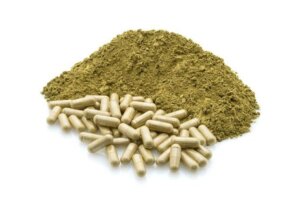The health and wellness industry has been a trailblazer in providing treatments and medical assistance for a wide range of ailments, illnesses, and disorders across the globe. Kratom is a recent addition to the list that has grown in popularity around the world. Lately, users can find it almost anywhere in the world. Its popularity is skyrocketing in the United States, in particular.
Kratom products can be found in most holistic stores and multiple internet retailers that offer nationwide shipping and delivery. However, as more people experiment with this natural plant, they are all asking the same question: “How many kratom capsules to take?”
Kratom is also known as Mitragyna Speciosa. It is derived from a coffee-family tree native to Southeast Asia. It has been used for over a century by people in these areas. Its consumption is claimed to tackle and manage some of the most common challenges affecting mental and physical wellness. From stress to lack of focus and even poor sleep, Kratom has the potential to promote internal and external balance.
Guidelines to monitor Kratom dosage
It is crucial to remember that it is appropriate, to begin with, small amounts of red indo Kratom and gradually increase if necessary. The safest option is to stick to the serving size recommendations on the label. Several reputable kratom manufacturers recommend 2-3 capsules per day. A new user should start with as few as two capsules and gradually increase the daily serving size until they achieve the desired results. Owing to the lack of scientific evidence, it is advisable to seek a doctor’s counsel before initiating dosage.
Numerous claims to health benefits of Kratom
Mitragynine is a chemical compound found in Kratom. Mitragynine relieves pain in the same way that most opioid medications do, such as codeine and morphine. Kratom is claimed to treat heroin, morphine, and other opioid withdrawal symptoms, cough, depression, anxiety, and various other conditions. There is, however, no credible scientific evidence to back up these claims. Kratom has several advantages that can help you in these situations. It can aid in the recovery of muscles and joints, as well as stress relief.
Overall, Kratom can benefit your body and mind in various ways, including increased mental clarity, relaxation, improved sleep quality, performance, and stamina. These are some of the numerous benefits of consuming Kratom. It’s important to note that everyone’s experience tends to differ due to factors such as serving size, frequency of use, and kratom type.
Lack of scientific evidence from Federal Agencies
Using Kratom can also be dangerous. Kratom use has been associated with severe side effects such as hallucinations, seizures, liver damage, withdrawal, and death. Due to these and several other serious safety concerns, the United States Food and Drug Administration (FDA) advises people to avoid using Kratom products or ingredients.
The Food and Drug Administration of the United States has issued a caution to consumers not to consume Mitragyna speciosa through Kratom- a plant that grows naturally in Thailand, Malaysia, and Indonesia. The FDA speculates that Kratom, which acts on the same opioid brain receptors as morphine, may be addictive.
There are no FDA-approved uses for Kratom. Moreover, the FDA has received concerns about its safety. The FDA has ongoing research and investigation concerning all available scientific information about this issue. Moreover, they advise consumers not to use any products labeled as containing Kratom or its psychoactive compounds, mitragynine and 7-hydroxy mitragynine. The FDA encourages additional research to understand the safety profile of Kratom better. That includes the use of Kratom in conjunction with other drugs. Since identifying Kratom on an import alert for unapproved drugs in 2012.
Precautions and side effects
When taken orally, Kratom is harmful to most people. Kratom can cause nausea, vomiting, dry mouth, uncontrollable bladder, constipation, aggression, hallucinations, delusions, and thyroid problems. When taken regularly, it can cause dependence and withdrawal symptoms. People who regularly use Kratom and then discontinue may experience a decreased appetite, diarrhea, muscle pain, and muscle spasms. Numerous users also reported watery eyes, anxiety, difficulty sleeping or restlessness, negative mood changes, tension, anger, nervousness, hot flashes, and fever.
There is also concern that Kratom’s sedative effects may cause people to breathe too slowly. People may not be able to get enough oxygen because of this. Long-term kratom use can result in extreme weight loss, skin darkening, frequent urination, constipation, and muscle pain. Though there is insufficient reliable information, it is advisable for pregnant women, alcoholics, and individuals with mental conditions to consume Kratom. It is advisable to limit using Kratom while pregnant or breastfeeding. Individuals who use Kratom but are also addicted to alcohol appear to be at a higher risk of suicide than those who use Kratom but are not addicted to alcohol. Lastly, Kratom could also exacerbate pre-existing mental disorders. Furthermore, people with mental disorders who use Kratom appear to have a higher risk of suicide than those who do not use Kratom but do not have a mental disorder.
Bottom Line
Kratom offers a long list of benefits that assists numerous individuals. However, the majority of them stem as self-reports rather than data collected from studies/scientific research. Moreover, Kratom’s claimed side effects outweigh its claimed medicinal properties. Although Kratom is promoted as a means of overcoming opioid addiction, the substance itself is highly addictive. Kratom addiction can develop in as little as six months, causing symptoms like opioid withdrawal, such as intense cravings, nausea, vomiting, and muscle aches.
Kratom is not federally regulated in the United States. Along with being insufficiently researched, it is also an unregulated substance. No government agency monitors or guarantees the quality and safety of kratom products purchased in the United States. Due to these reasons, Kratom should be consumed in minimal doses after consulting with a medical professional or a physician. Furthermore, the law suggests that users exercise precaution while purchasing contraband substances since it is also illegal in many states.











Comments
“What are the rewarding properties of Kratom Capsules?”